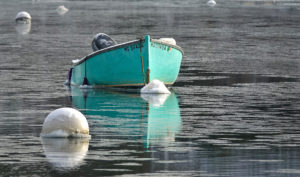The Town of Harwich is a quiet resort and agricultural community located on the south side of the Cape peninsula, with an extensive shoreline on Nantucket Sound. The year-round population is approximately 12,677 with a seasonal increase to 37,000. Harwich encompasses 20.93 square miles of land area with 10.9 miles of tidal shoreline. The town was settled around 1665, and incorporated in 1694. Its early economy included agriculture and maritime industries.
Harwich is located on Nantucket Sound with Nantucket and Martha’s Vineyard just south of its sunny beaches. That barrier protection and the shallower water lead to water temperatures that are much more comfortable.
In 1667, Indian Chief Sachemus gave John Mecoy a 36-acre parcel of land in what is now Harwich Center. Gershom Hall, the first white man to reside in Harwich, settled on this land in 1668.
When the whaling industry collapsed with the discovery of oil, the community’s emphasis shifted to cod fishing. By 1802, 15 to 20 ships were shore fishing and another four ships were cod fishing in Newfoundland and Labrador, and by 1851, there were 48 ships employing 577 men and bringing in thousands of tons of cod and mackerel.
The eventual decline of the fishing industry in Harwich by the latter part of the 19th century was caused by increases in the size of ships which eventually outstripped the shallow port’s ability to house them. Residents turned to the development of cranberry bogs and resorts for summer visitors, working side-by-side with Portuguese immigrants. The first resort hotel opened in 1880 and both the cranberry and the tourist industries remain substantial parts of Harwich’s economy in the present.
Sidney Brooks was born in Harwich in 1813. He was educated at Phillips Academy in Andover, and went to Amherst College in Amherst, Massachusetts. After graduation, he taught at Chatham Academy. In 1843 he began plans to establish a private academy in Harwich. There was no public higher education beyond the elementary level in place at that time. The school opened December 14, 1844 with 45 students, mostly from Harwich. The two-room school was presided over by Sidney Brooks, and an assistant Samuel Miller. The school was open to both sexes and offered courses typical of a high school curriculum at that time.
Anthony Elmer Crowell (1862-1952) was born into a family of mariners and cranberry farmers. As a boy, Elmer was captivated by the outdoors and like many young men of the period, he was always whittling. Explore the story of the Harwich bird carver Elmer Crowell at the reconstructed barn on the grounds of Brooks Academy Museum. The museum has recently opened a brand-new permanent exhibit about the life and work of A. Elmer Crowell, which includes actual video footage of Elmer in his workshop.
John H. Paine Collection is a premier acquisition of the Harwich Historical Society. A collection of historical documents, it preserves much local history. The material was collected by Josiah Paine. Born in Harwich in 1836, he early developed an interest in history and genealogy and collected data for a history of the town. The Paine Collection has now been professionally archived through a grant from the Community Preservation Funds.
Harwich is comprised of seven villages, each with their own special beauty and special character: South Harwich, North Harwich, Harwich Port, Harwich Center, East Harwich, West Harwich and Pleasant Lake.


























